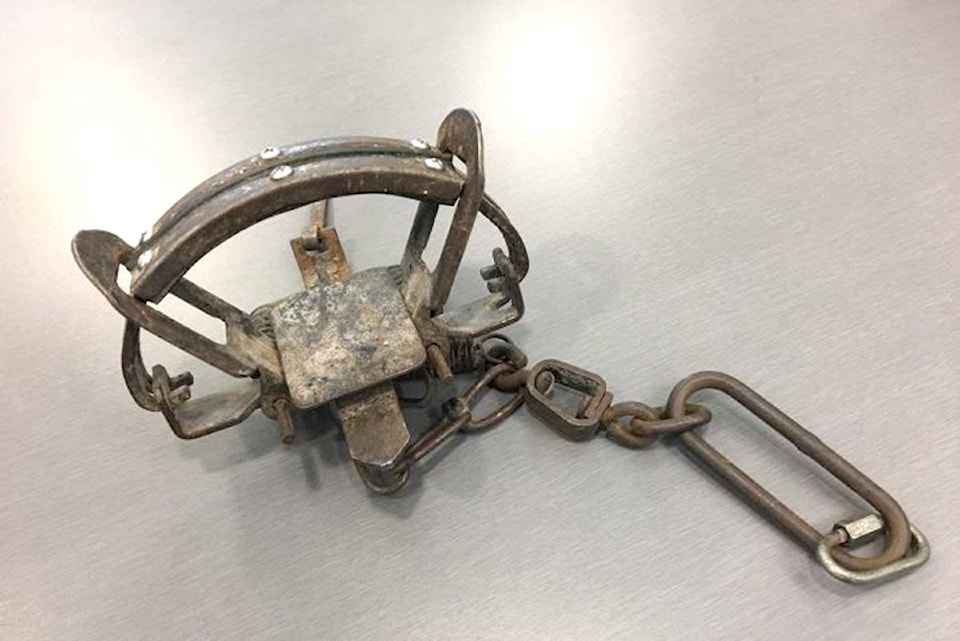Bill Post of Cranbrook is pondering an horrific experience that happened to one of his dogs while on a hike, and wants the community to be aware of what occurred.
Two weeks ago, Post and his wife and two black labrador dogs went hiking a few miles from Cranbrook. Returning back to their vehicle, they let their two dogs go off into the trees for a bit of a romp. Just off the road, one of his dogs was caught in a leg hold trap.
Post and his wife had to move their dog, trap and all, back to the road, and then to town, straight to the vet, where, with the dog under general anesthetic, they were able to get the trap off.
The dog’s leg was saved, and will be okay. But he had damaged almost all his teeth, biting at the trap in panic and pain.
Post had to take the dog to Kelowna to a dental veterinarian, one of only nine in the country. Twelve teeth had to be extracted, and others repaired.
Post said he was contacted by local Conservation Officers about the incident.
“They wanted to know what happened,” he said. “[The COs] said they’d contacted the trapper, and that he had abided by the rules.
“These traps are totally legal in Canada.”
They are not legal everywhere, though. Spring powered, steel jaw traps, or leg-hold traps are banned in 88 countries, including all of Europe, the use of these traps is forbidden. Importing fur from countries that use these traps is even prohibited. Nine states in the U.S. have banned the traps as well.
Following the incident with his dog, Post — himself a hunter — now believes the leg-traps should be banned in Canada as well.
“Leg hold traps are legal,” Post wrote in a statement. “They are used in the East Kootenay to trap wolves, but they coyotes, bears and dogs … Once caught, the pain is terrible, and the only way to escape is to chew the leg off. The mouth, tongue and teeth are severely injured. It can last for days until the animal is shot.
“It is time to stop this inhumane way to catch animals.”
Post stresses that he is not opposed to the hunting of wolves, but that there are more humane ways to do it.
Another issue, he says, is that no one other than the trapper knows where the traps are. A human could step in one, not to mention one’s pets.
Since the incident, there have been a couple of signs put up in the area, Post said. But if he had known there were traps in the vicinity, he would not have let his dogs go run.
There are several types of traps are for holding (foot snare, leg-hold, or box) or killing (deadfall, neck snare, Conibear, submarine trap). Box holding traps are normally non-injurious.



